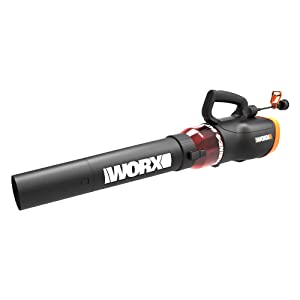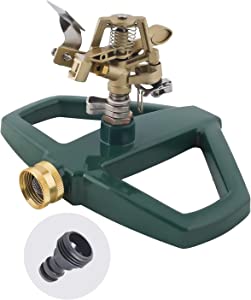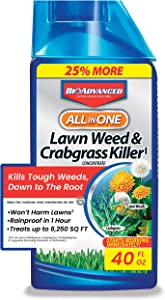Leaf Blowers
All About Leaf Blowers

As the name suggests, a leaf blower is a tool used to blow leaves and other debris into piles, so that it’s easier to burn the trash or bag and otherwise dispose of it. These ingenious tools trace their roots back to the 1970s.
Leaf blowers are loved for their incredible light weight, speed, convenience, and energy-efficiency. They significantly reduce the amount of time that was traditionally required to rake, pile, mulch, and bag yard debris.
Since their invention, leaf blowers have been manufactured in various configurations depending on their driving fuel or style of handling. In that regard, we have the electric and the gas-powered leaf blowers, as well as the backpack-style and the hand-held leaf blowers, respectively.
Do I Need A Leaf Blower?
If you have heaps of leaves and other debris on your property that require regular collection, then you’re a perfect candidate for a leaf blower. Even if you don’t frequently collect waste in your yard, certain seasons, such as the fall season, will invariably necessitate a leaf blower.
You might think that hiring one to pull a one-off debris collection exercise is cost-effective. But you’ll discover that purchasing your own leaf blower is economical in the long run.
Leaf blowers are also ideal for people who’re always on the go. The tools enable you to clear out leaves in record time, enhancing your overall productivity.
From a medical point of view, leaf blowers can significantly reduce or eliminate aches and pains that often result from bending, squatting, or crouching when clearing leaves from your property.
How Do Leaf Blowers Work?
Leaf blowers operate on the principle of centrifugal force. Centrifugal force refers to the energy created when a frame rotates so fast that it generates force and causes objects nearby to move. When you turn on a leaf blower, the blades rotate rapidly and in effect, generate centrifugal force. The force then acts on the air that surrounds the device, sucking the air into the fan of the tool. After that, the centrifugal force pushes the sucked air out of the tool.
A leaf blower is designed with a narrower front as compared to its back. Therefore, as the air is forced out, it comes out so forcefully that there’s a balance between the air getting sucked and that getting pushed out the device. That creates a wind speed that clears leaves from the yard.
How to Purchase a Leaf Blower
There are numerous considerations when buying a leaf blower. But the most common ones include;
- The type of fuel the tool uses,
- The safety concerns,
- Speed and convenience,
- The brand,
- Noise levels, and
- Your budget.
In terms of fuel consumption, leaf blowers are divided into Gas and Electric Leaf Blowers. Each of these comes with its own benefits and drawbacks, depending on what you’re looking for.
If you’re looking for a hand-held leaf blower that works incredibly fast, then you should consider the gas variant. However, corded electric blowers have proven to be more efficient for bigger jobs. The major drawback to corded electric leaf blowers is their limiting range. Most of these tools come with outdoor extension cords that top out at 100 ft., which significantly limits the radius the user can cover in one round. Also, corded electric leaf blowers feature less power and limited runtime for every battery charge. And the amount of energy they give off depends on the strength of the battery, unlike gas blowers that give off consistent power supply till the gas runs out.
Gas blowers aren’t corded. Therefore, you can blow leaves from any corner of your yard. But they tend to cost more than their corded electric counterparts. And besides their higher initial purchase price, you’ll also need to factor in the cost of fuel refill and regular maintenance. Not to mention, they’re also relatively heavier and noisier.
Noise levels is a crucial consideration when buying a leaf blower, as you don’t want to disturb the otherwise peaceful neighborhood. When shopping for these tools, always look out for the decibels which are usually listed as part of the product features. Check and compare them, ultimately settling on the most silent tool. Also, establish if there are any regulations on the use of leaf blowers in your community. Some communities prohibit the use of leaf blowers during certain hours or tools that emit particular noise levels. You can always check your town regulations here.
In terms of the handling style, the handheld blowers are generally cheaper than the backpack-style blowers. However, the handheld blowers deliver less power and present extra baggage to the user’s hands, making them less convenient than their backpack counterparts. If you find neither option desirable, you can experiment with the more innovative wheeled blowers. Wheeled leaf blowers are ideal for properties with heaps of leaves as they’re way more powerful than the handheld and the backpack-style blowers. However, their main drawbacks include the fact that they consume a lot of storage space, and their controls are somewhat difficult to handle. And as you may expect, they come with the biggest price tags.
The brand is also an important aspect to consider when buying a leaf blower. Some of the top leaf blower brands include Dewalt, Hitachi, Black and Decker, Toro, and Husqvarna. Generally, leaf blowers manufactured by reputable brands tend to be costlier. That’s because most of them feature a balance of the desirable features. However, always look beyond the brand name when purchasing these tools, and remember that higher price doesn’t always translate into better quality. Once you know the qualities you’re looking for, go for a blower that features those specifications regardless of the brand or company name.
Lastly, it’s also prudent to consider safety concerns when choosing a leaf blower. For instance, you want a blower that comes with a quick shut-off switch in case things go wrong or nonslip handles for better hand comfort and reduced hand fatigue. Other safety specifications include bottom-mounted air intake, built-in dust collection kit, and a wide-mouthed gas tank for gas models. For electric blowers, ensure the extension cord is double insulated. That will prevent cases of electric shock in case the first layer of insulation wears off.
Experts advise looking for a sticker on the product that suggests it has been approved by CSA, NSC, OPEI, ANSI, UL, CPSC, or IEC. Above all, check the country of origin and study their regulatory standards. Then, establish if such measures conform to those of any of the mentioned regulators. Also, remember to buy a product that comes with a manufacturer’s warranty or registration card. You should then proceed to complete the form and mail it back to the manufacturer. Doing that will ensure you’re kept on the loop in the event of product recalls.
Safety Precautions When Using a Leaf Blower
Much as they make our work easier, leaf blowers come with immense safety concerns. Injuries could result from cuts, bruises, electrical shock, eye injuries caused by projectile debris, fires, hearing loss, or breathing problems.
Before you go looking for your ideal leaf blower, remember to abide by the following safety precautions;
- Wear hearing protection in the case of noisy models.
- Wear dusk masks and goggles while using the device.
- Keep children as well as pets away while operating a leaf blower.
- Avoid running the blower beyond the restricted hours.
- Don’t operate the blower when tired, drunk, or under the influence of drugs.
- Tie back long hair or loose clothing.
- Always turn off the device while not in use.
- Replace the filters as regularly as recommended.
Above all, remember to disable the power supply in the event of an accident or injury. Then, attend to yourself first before taking the tool for repair and maintenance.



